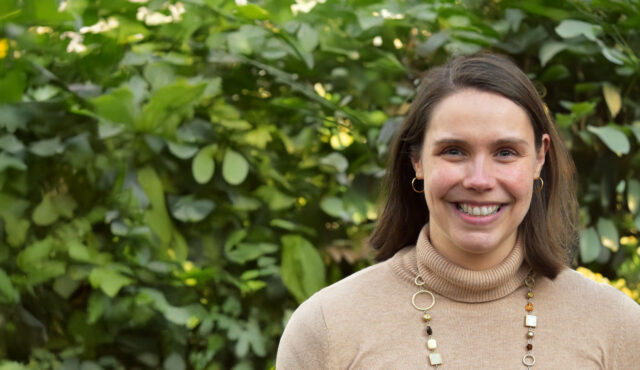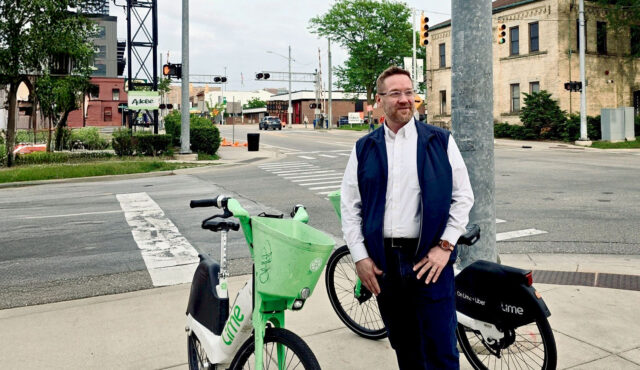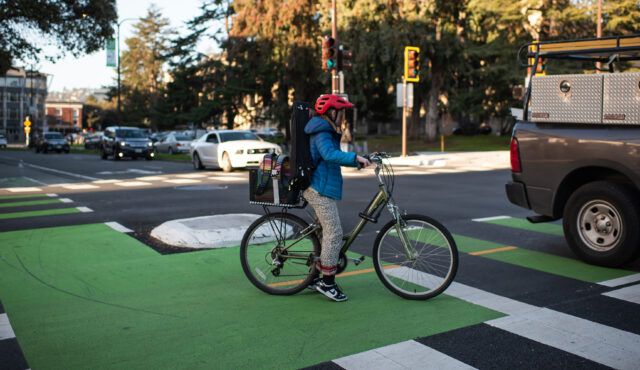To describe Dylan Passmore as an expert in multimodal design feels like an understatement. His interest in the subject started long before his professional training, and his devotion to the multimodal lifestyle extends well beyond the workday. Read on to learn how Dylan became a leading North American authority on multimodal and accessible street design — and to find out just how many modes he can fit into a single trip!
What is your active transportation origin story?
Well, this is my second career path. When I first graduated from university, I worked in software development in Victoria, BC. I bought a car because, back then, that was what you did when you got your first job. But I quickly realized the cost of owning a car was very real and that Victoria had great options for getting around by bike or bus. I tried biking to work based on some tips from a colleague and something “clicked.” I sold my shiny red car a couple of weeks later. I had a 20 km commute, but there were different options so I could mix up my route, including taking the bus on those heavy west coast rainy days. One route took me past a lake, and I would often go for a swim on my way to work. It was amazing, and in a way also a coming-of-age moment that began more profound reflection on city building and mobility choices.
How did you go from avid bike commuter to transportation professional?
I was young and eager to see more of the world so I took some time off for travel. The dot com crisis had hit, and I was thinking about going back to school. Somehow, I came across urban planning programs and distinctly remember one showcasing a student thesis discussing the impact of drive-thrus on the pedestrian realm. I was amazed that this was something you could study at school. I applied to the Master’s Planning program at University of Toronto and for some reason they took me in!
One of my professors had a passion for urban design and environmental psychology, and through him I found that transportation was my passion – a space where I felt I could make an impact and the niche that melds my technical interests in design and engineering, as well as my growing appreciation for planning processes and the social impacts of auto-centric city building. I went on to get a job at a consulting firm in Toronto at a time when lots of cities and agencies were in the early stages of thinking more seriously about how they could improve walking and cycling. There was also quite a buzz in the Greater Toronto and Hamilton Area around funding major transit improvements, so I was fortunate to work on several such projects in these early days.
What places have inspired you?
European cities understandably get a lot of attention in this field, but I also like to talk about Latin American cities where I’ve spent some time. To be clear, they struggle with a long list of challenges, but the informality of how they use and appreciate their public spaces, the mixed density of the cities, the festival spirit — it’s very inspiring and exciting. For example, some Colombian cities I’ve visited were able to do so much with so few resources. They’ve gone from very little cycling in Bogotá not long ago to a staggering volume today — it’s like Dutch levels of cycling. In Medellin, they built an amazing subway system while they were amid a period of major urban violence, and it was later integrated with gondolas and public spaces that reach into marginalized communities. The social impacts have been profound and go well beyond just getting people from A to B. When you’re there you can feel how much pride the city residents have around these achievements.
How did you connect with Toole Design?
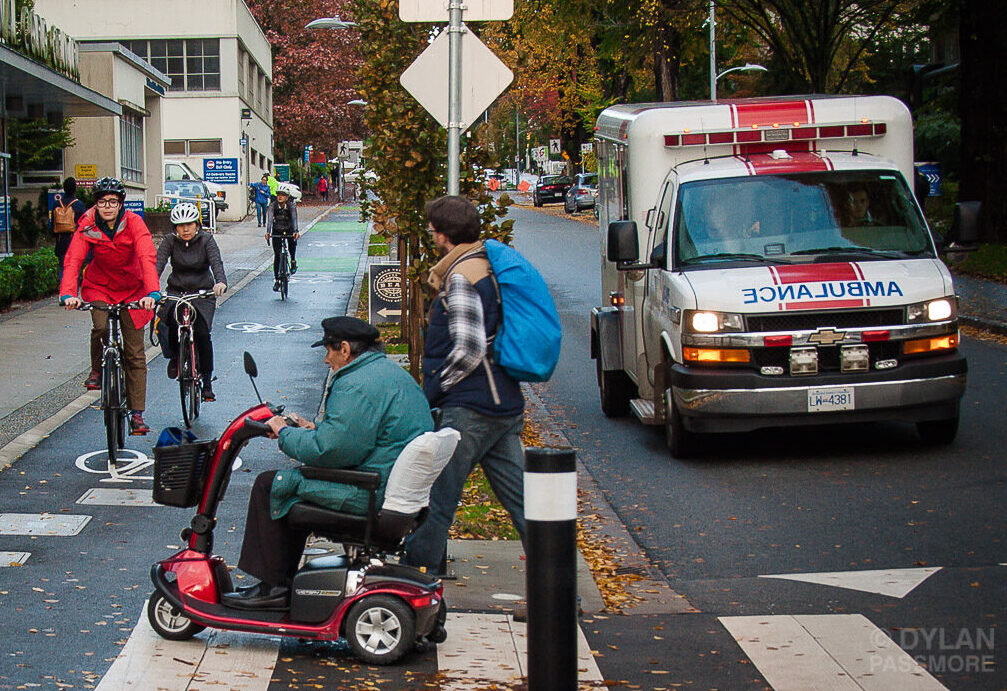
While I was working in Toronto, we partnered with Toole Design on a couple of projects and that’s when I first connected with Bill Schultheiss.
Later, when I was working for the City of Vancouver, although we did most of our project work in-house, we hired Toole Design for support on the 10th Avenue Hospital Zone project. Given it was adjacent to many health services, the project involved considerable discussion related to accessibility, which resulted in me leading some broader discussions around City accessible design practices. At the time, Bill and Jim Elliott were also leading some FHWA work on inclusive design, so we separately had Bill come to lead our first inclusive design workshop that brought together numerous stakeholders across the city. A few weeks later I visited one of the FHWA workshops run by Toole Design in Seattle — it was clear we all had the same issues top of mind.
What projects are you excited about?
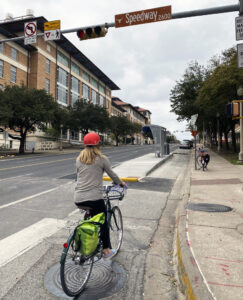
I mentioned the 10th Avenue project in Vancouver. That one will always have a place in my heart (and grey hairs on my head). It involved nearly every transportation design theme you can think of in 5 blocks, including the sensitivities of ensuring access to Canada’s second largest hospital , and the corridor just wasn’t working well. We led a major 3-year engagement effort through which we had to balance difficult trade-offs and high emotions. That project taught me the importance of listening with empathy and not just walking in as an Engineer thinking you know the answers. Toole Design staff take these issues to heart and I’ve been building off this experience to help support improving inclusive design practices across several projects.
Right now, I’m excited about the City of Austin Standard Details project. Austin staff are really raising the bar but a lot of knowledge only exists in people’s heads. So we’re working to get these practices on paper and establishing some consistency across various design elements. We’re developing new multimodal standard details for things like floating bus stops, tactile directional indicators, new cane-detectable beveled curb
profiles, curb extensions with landscaped channels, and driveways with protected bike lane crossings. It’s a great opportunity to bring everyone together and bring our experience to the table to set a new standard for these important building blocks.
I also have to mention our work on implementing the City of Tacoma Vision Zero Action Plan, which was recently named Planning project of the year by ITE Washington! The City recognizes the status quo is not an option, and they appreciate our support developing designs that are exciting and progressive, but also feasible and grounded.
What does the future hold for Toole Design in Canada?
I’m so excited about the next chapter of Toole Design in Canada. We have a solid team doing great work in active transportation and landscape architecture, and we’re in good hands with Olga Messinis at the helm in Edmonton. I think it’s going to be a chapter of growth, not just in Edmonton but here in Vancouver and throughout Canada.
And beyond Canada, too. Toole Design embraces a “one company” philosophy, so our team is working on projects in both Canada and the U.S. As the whole company grows, I’m personally excited to be working closely with Jeremy Chrzan to build up our training infrastructure to better disseminate multimodal design knowledge internally. I’m helping to facilitate office hours, develop training materials, and just keep growing and sharing our internal expertise.
As for the long-term future, things will continue to evolve rapidly over the next twenty years, as they have over the past twenty years. But I keep coming back to inclusive design, knowing that’s only one piece of the broader equity conversation. In many ways, it’s uncharted territory, so we’re not solving everything just yet, but we’re raising a lot of questions. We solve one issue, and then another pops up. That’s the process, and I’m excited to keep asking questions and keep refining our approach.
What’s your favorite way to get around?
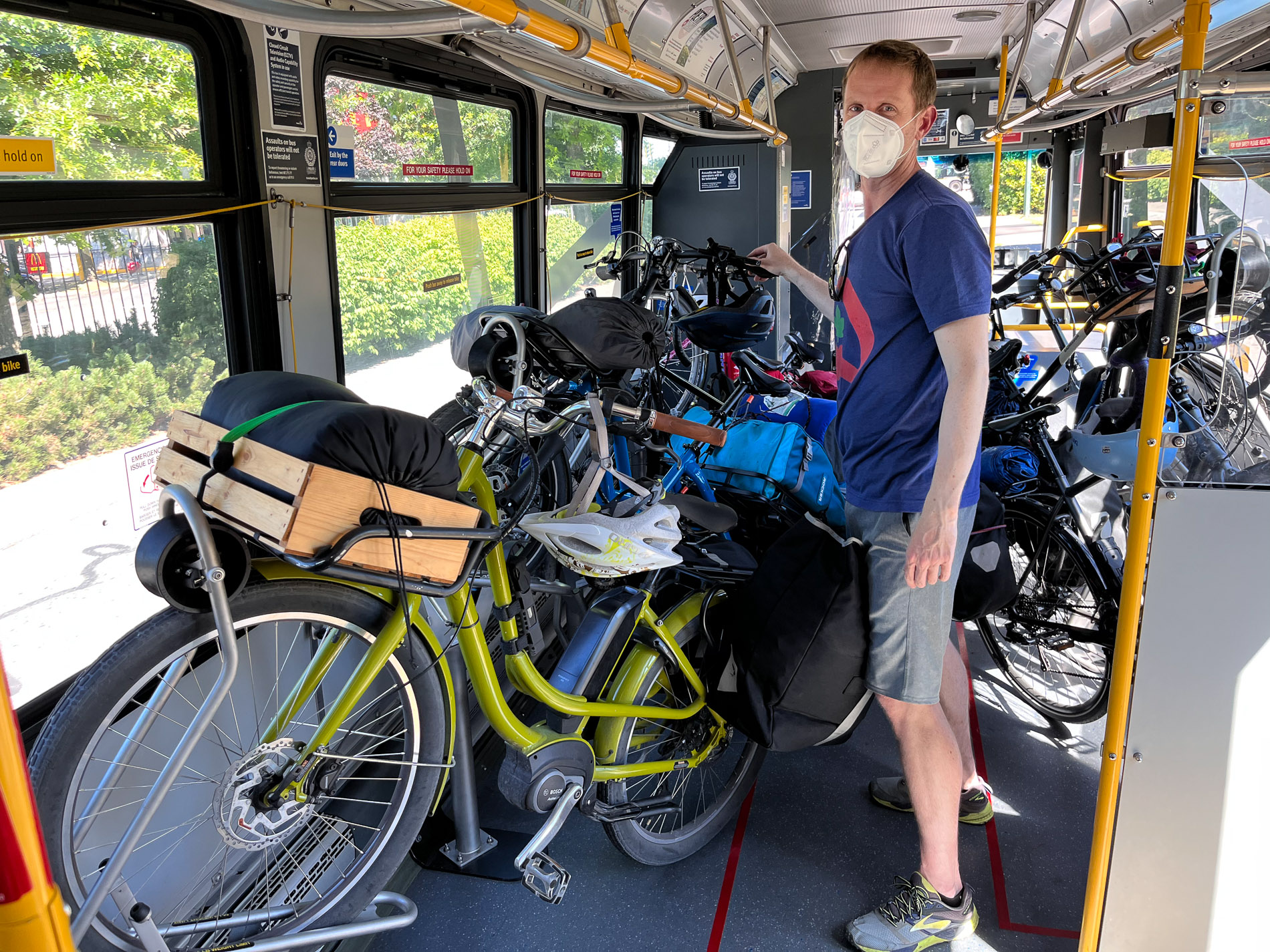 Unsurprisingly, I lead a very multimodal existence. One cool thing about living in Vancouver is that you don’t need to own a car here. There’s a healthy car sharing system, and great public transportation. I recently got an e-assist cargo bike that can carry my inflatable paddle board and that also fits in the trunk of a hatchback or the bike rack on a bus. On weekends I sometimes bike to the SkyTrain, train to the bus, bus to the ferry, ferry to Vancouver Island, then bike down a rail trail to take my paddle board out on the lake. I know that’s a more extreme example of being multimodal(!), but the point is a lot of modes are well supported here.
Unsurprisingly, I lead a very multimodal existence. One cool thing about living in Vancouver is that you don’t need to own a car here. There’s a healthy car sharing system, and great public transportation. I recently got an e-assist cargo bike that can carry my inflatable paddle board and that also fits in the trunk of a hatchback or the bike rack on a bus. On weekends I sometimes bike to the SkyTrain, train to the bus, bus to the ferry, ferry to Vancouver Island, then bike down a rail trail to take my paddle board out on the lake. I know that’s a more extreme example of being multimodal(!), but the point is a lot of modes are well supported here.
So yes I do bike a lot, but I get around lots of ways. That’s actually at the core of our approach at Toole Design, too. It’s not about any one way, but ensuring everybody can get around safely, comfortably, and sustainably.
